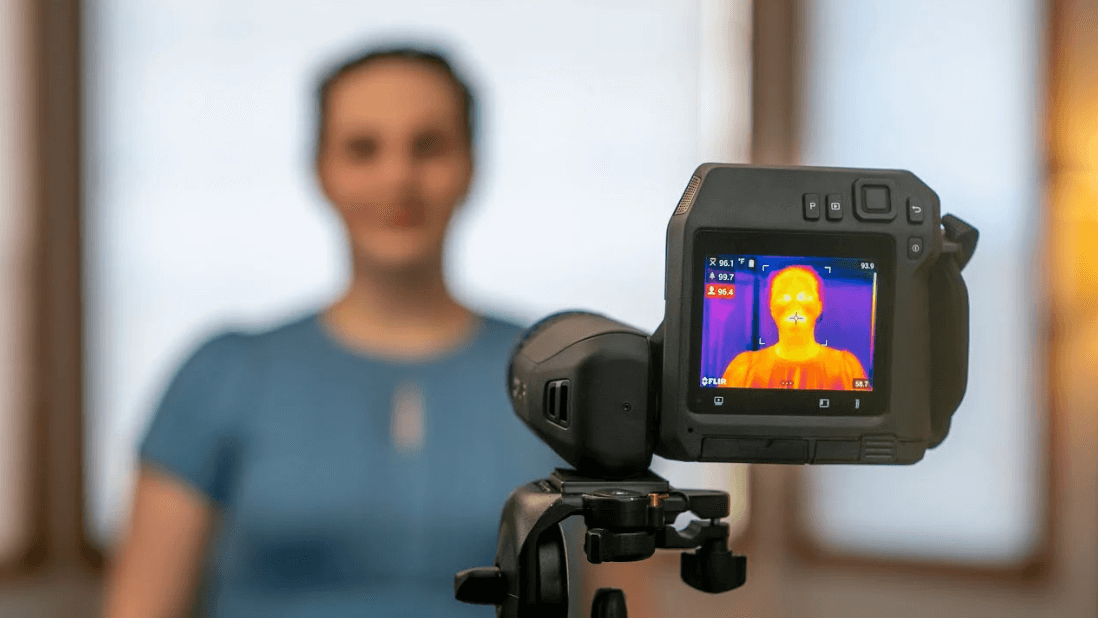Applications of Thermal Scanners Systems
Thermal scanners are used in numerous homes, architectural sites, and construction facilities as a repair device for surveillance and inspection. It has the following applications.
Infrared Thermography Technology Areas: The human body falls deprived of the capacity for short extreme light wavelengths except for medium, sluggish wavelengths. This will cover the human eye holes with infrared cameras and thermal imaging. Thermal energy is much longer than visible light in wavelength. Everything in the world that exceeds the absolute zero temperature emits certain heat levels that can be measured and detected.
FLIR: Such cameras are used in police and military helicopters, and are used to identify heats sources and are displayed by video production, which is also known as forwarding Looking Infrared. However, as they only display a specific infrared range, the FLIR camera is very different from the other night-vision and conventional infrared cameras.
For every application, stationary or mobile, InfraTec offers flexible thermal graphics software that meets its customers’ specific requirements.
Non-destructive substance measuring Accurate Thermography: Active thermography is called mainly the heat flow induction by energizing a test object. High-precision infrared cameras record thermal flows through the internal substance layers and defects. This tests algorithms differently and boosts the signal-to-noise quality, which also detects the smallest defect. The following fields are used:
Aerial Thermography: The history of aerial thermography begins with military applications beginning in the Korean War and being used on the ground to detect enemy forces and resources. While the US military is always developing this to improve continuously, these are some examples of its different uses in other fields:
- Boost the visual visibility of tiny objects.
- Small smearing quick infrared camera systems.
- Integration of GPS data and visual images.
- Various accessories such as gymnastics.
- Monitor large geological properties for modifications
- Inspect biotopes’ thermal storage capacity in industrial complexes.
Aerospace Business Thermography: Because of the high safety and material requirements, Aerospace makes the most significant demands on Infrared camera systems. Frequently, large thermal resolutions are available, 100 Hz high frame rates, and higher. To ensure that the next version of lightweight, fuel-efficient aircraft is as secure as the existing one, airspace companies will use thermograms to check active heat flows on modern composting materials.
Auto mechanical Thermography: Strict competitiveness and a search for improved results, fuel-saving, and lightweight cars are pushing thermography to achieve the required productivity by quality controls for all electrical systems, engine assemblies, and window heating components. This enables identification of numerous product failures and faults found even by temperature adjustments for the car industry and helps the parts to be reconciled with their normal behavior.
High-speed picture capturing open doors that enable the visualization of thermal processes at high-speed. This allows a minute tracking of components and structures to grasp fast chemical processes and provides a broad range of knowledge in tandem with efficient measuring and reporting tools. The cameras use unique detectors and acquisition systems known as snapping detectors, which have accurate thermogram measurements up to the millisecond scale by collecting and shows data at the same time.
Carbon sector thermography: Infrarot cameras can be used to help the thermal flow resulting from chemical processes by industries dealing with harmful and non-hazardous chemical materials. Thermal imaging enables the identification, calculation, and study of chemical processes across a process chain by way of a more accurate temperature distribution. In particular, thermal imaging is non-invasive and contactless and means that people are kept at a safe distance while thermal imaging cameras do their utmost to collect relevant information.
Electronics and Electronics Thermography: The implementation of infrared cameras and thermography technologies will support electrical systems and electrical distribution devices. Common infrared problems can be identified for infrared imagery in the electrical field:
- Loosely linked
- Weak interactions
- Overheated covers
- Cooling transitions blocked
To control possible surges, to monitor tank levels closely, process line inspections, and even to assess the status of circuit boards, the manufacturing industries can use electrical thermography.
Mechanical devices from various sectors should be quickly checked to identify faults until they become significant issues. Infrared, there are diverse and do not include applications in thermal imagery as they relate to mechanical inspections:
- Note air leaks in refrigeration systems and damaged condenser tubes
- Locate and identify overheating spaces, increased temperatures for discharge, and excess oil temperatures in pumps and compressors, ventilators, and blowers.
Materials Testing Thermography: Infrared thermography cameras are a compelling alternative in non-destructive testing of structural situations or materials. Provided that all in this universe absorbs infrared when its temperature reaches absolute zero, non-de structural infrared test materials are feasible, as measurements and readings can be taken from whichever surface is used for heating or cooling. In such conditions, it’s not only non-harmful to use inferred cameras for thermal imaging but also non-invasive.
Infrarot tests can, for example, be used to carry out building inspections. When it comes to improving energy efficiency and helping the world combat climate change, the use of infrared cameras much supports the improvement of the structure to fight energy loss and waste.
Infrared Thermometers: are different from Thermal Scanner Systems.
Infrared Thermometer is cheap so are easily affordable. Infrared Thermometers directly give the estimated temperature of the object being measured.
